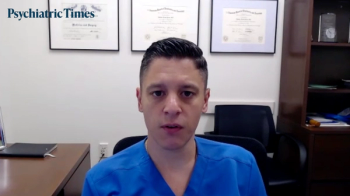
Telepsychiatry: To Be or Not to Be, That Is the Question
Until a study demonstrates the non-inferiority of home-based telepsychiatry, the standard of care outside of a public health emergency requires patients to be seen face to face in an office, or with a nurse present at federally qualified health centers with a telepsychiatry set up.
Following President Trump’s national public health emergency (PHE) declaration response to the threat of coronavirus, the
The drug enforcement agency temporarily removed the requirement for a face to face evaluation before prescribing controlled substances. Subsequently, CMS compensation was also expanded for audio-only treatment sessions. The
Many long-standing vocal proponents of telepsychiatry are advocating that CMS permanently remove the restrictions for video conferencing, even when the PHE is over. Undoubtedly, telepsychiatry has helped patients and physicians stay afloat during this period of physical distancing, but should home based videoconferencing become the new standard of mental health care? Or, should telepsychiatry remain strictly in the domain of federally qualified health centers, as it was before the PHE?
Federally qualified health centers cater to underserved areas and receive funding from the Health Resources and Services Administration. Federally qualified health centers are required to provide mental health care to patients; in rural areas they accomplish this using videoconferencing, where both the patient and psychiatrist are utilizing a reliable broadband and camera setup, and a nurse is with the patient.
APA’s advantages of telepsychiatry
The use of video-based telepsychiatry helps meet patients’ needs for convenient, affordable, and readily accessible mental health services. With a robust evidence base that shows telepsychiatry leading to improved outcomes and higher patient satisfaction ratings, policy makers, payers, and providers are increasingly considering ways to implement and use telepsychiatry.
Many psychiatrists find
A double-edged sword
The convenience, affordability and ease of access to patients that is inherent in telepsychiatry presents psychiatrists and patients with a double-edged sword.
Therapeutically. Home based telepsychiatry disables several psychotherapeutic interventions that were part and parcel of every psychiatry appointment. Specifically, there is no behavioral activation from the commute to the office, no opportunity for social interactions, and no exposure to avoided elements outside the patient’s home. Since the psychiatrist has no control over the patient’s setting, distractions and privacy are a concern. In the PHE, I found that transitioning the relationship to telepsychiatry was easy with longstanding and technologically savvy patients, and nearly impossible with anyone else.
Technologically. Despite prior straightforward instructions on how to prepare for appointment, many home based telepsychiatry appointments consist of a shaky partial view of the patients face while they hold their smartphone in a dimly lit room or parked car. Most patients use their smartphone and limit the observable field to what they want to show. Even when both parties have adequate equipment, internet service is unreliable. Even when the internet is working well, the videoconferencing platforms can have problems with the audio, video, or synchronization with low quality results.
Clinically. Only a partial mental status exam is possible, evaluations of gait and peripheral movements are rarely done, and a full assessment of grooming is impossible when you cannot smell the patient and he or she may be appropriately dressed in lounge-ware. Clinician rating scales as well as physical or neurological examinations are extremely limited. Many patients don’t have a scale to monitor weight, and orthostatic vitals cannot be measured.
If there is an emergency, hopefully the patient is at the address in the chart for emergency services to intervene in time. Any psychiatrist conducting a virtual evaluation may evaluate the chief complaint but neglect issues that the patient does not have clinical or cognitive insight of, such as substance use, psychosis, obsessive-compulsive and related disorders, eating disorders, cognitive disorders etc. Movement disorders and other adverse effects may be unnoticeable on the screen yet evident in an office setting.
Moreover, it raises legal implications as to whether patients can give meaningful informed consent for substandard care since they are completely unaware of the risks of the telepsychiatry appointment.8-10 Such a scenario may be analogous to a physician with a sensory impairment asking a patient to sign that they are aware of the risks of being cared for by a physician with a sensory impairment. While patients may be aware that there is an impairment, they can never be informed of the risks unless they completed the same medical training.
Beyond inadequate psychiatric evaluation, telepsychiatry also reduces the practicality of alternative treatment options. Psychiatry has become more brain and neuroscience based, with FDA-cleared
Economically. On a macro-level, telepsychiatry devalues the psychiatric profession scientifically and economically. Economically, the health care sector employs 12% of the US population. Americans spend approximately $11,000 per person annually on health care, 17.7% of the 2018 gross domestic product.12
If psychiatrists don’t need offices or employees then psychiatry compensation will be decreased along with the investment into research and treatment of psychiatric disorders. On a simplistic level, if telepsychiatry is considered standard of care then insurance companies will allow telepsychiatry to continue to be reimbursed. This will result in lower contracted reimbursement rates with telepsychiatrists, since they have a lower overhead.
If lower reimbursement becomes available, then there is no longer an incentive or need to contract with in-office psychiatrists, which results in lower contract rates for all psychiatric visits. This is what happened when lower level providers were able to contract with insurance companies to provide psychotherapy for psychiatric patients. It removed the incentive for insurance companies to adequately compensate psychiatrists for psychotherapy. As a consequence, patients in extremis may receive unhelpful psychotherapy for depression and anger management by a lower level provider before getting an evaluation and diagnosis of bipolar disorder and OCD from a psychiatrist.
Health care fraud is already a prevalent problem, costing Americans between 3% and 10% of
Recommendations. The decision on using telepsychiatry post-PHE should be purely clinical, and I have implemented that practice as a selective telepsychiatry provider since 2006. Active listening includes what the patient said, how he or she reacted (affect and body language), and what the patient avoided saying. These observations are difficult enough in person, they cannot be accomplished by just looking at the person’s face through the smartphone.
With telepsychiatry, we will not get the opportunity to observe much of what psychiatrists are trained to rely on. However, there is a role for telepsychiatry: with a well-established patient who you are confident is being forthcoming, or when you are certain that telepsychiatry is not enabling psychiatric symptoms that would make the patient want to stay home, due to a phobia or more general avoidance in the context of depression and PTSD. Telepsychiatry can be an appropriate treatment medium for established, reliable patients. Examples include scheduled follow-ups for refills of a medication with a low risk of diversion, to change a medication or dosages when there is an adverse effects, or when continuing a course of structured therapy for an established patient.
Billing for these cases would reflect straightforward medical decision making. However, even these telepsychiatry appointments should be for patients that are primarily seen in-office, where psychiatrists can be most likely to observe anomalies and inconsistencies early on. This time of increased mortality from substance use and suicides as well as an increase from deaths of despair warns us not to pay less attention to our patients in exchange for convenience.14-16
Conclusion
It is important to embrace innovation and technology, and psychiatry may eventually utilize objective measures such as facial microexpressions, rhythm, and speech from video recordings of psychiatry session. After the PHE, psychiatry should initiate a well designed long-term randomized controlled trial that compares home-based, video-conferencing telepsychiatry to in-office psychiatry. The
Only first-time psychiatry patients would be randomized to limit selection and omission biases. Outcomes should include (from all-causes) mortality, hospitalization days, days of work or school lost, days unproductive, days of incarceration, days of homelessness, emergency service needs, clinical encounters, relationship and job longevity, etc. Both the office-based and home-based sessions would be recorded and analyzed for machine learning purposes of the exploratory objective measures.
Until a study demonstrates the non-inferiority of home-based telepsychiatry, the standard of care outside of a public health emergency requires patients to be seen face to face in an office, or with a nurse present at federally qualified health centers with a telepsychiatry set up.
Dr Tendler is Diplomate of the American Board of Psychiatry and Neurology, General Psychiatry and Sleep Medicine. Diplomate of the American Board of Obesity Medicine. He is a Physician, Advanced Mental Health Care Inc, Palm Beach County, FL; Researcher at Ben Gurion University of the Negev, Department of Life Sciences, Beer Sheba, Israel; and Chief Medical Officer, BrainsWay. He reports that potential conflicts of interest include commercial clinical activities and clinical research into neuromodulation with BrainsWay and Liva Nova.
References
1. Hubley S, Lynch SB, Schneck C, et al. Review of key telepsychiatry outcomes. World J. Psychiatry. 2016;6:269-282.
2. Blom K, Tarkian TH, Wiklund T, et al. Internet-vs. group-delivered cognitive behavior therapy for insomnia: a randomized controlled non-inferiority trial. Behav Res Ther. 2015;70:47-55.
3. Acierno R, Knapp R, Tuerk P, et al. A non-inferiority trial of prolonged exposure for posttraumatic stress disorder: in person versus home-based telehealth. Behav Res Ther. 2017;89:57-65.
4. Mitchell JE, Crosby RD, Wonderlich SA, et al. A randomized trial comparing the efficacy of cognitive-behavioral therapy for bulimia nervosa delivered via telemedicine versus face-to-face. Behav Res Ther. 2008; 46:581-592.
5. Morland LA, Greene CJ, Rosen CS, et al. Telemedicine for anger management therapy in a rural population of combat veterans with posttraumatic stress disorder: a randomized noninferiority trial. J Clin Psychiatry. 2010;71:855-863.
6. Morland LA, Mackintosh M-A, Greene CJ, et al. Cognitive processing therapy for posttraumatic stress disorder delivered to rural veterans via telemental health: a randomized noninferiority clinical trial. J Clin Psychiatry. 2014;75:470–476.
7. Axelsson E, Andersson E, Ljótsson B, et al. Effect of internet vs face-to-face cognitive behavior therapy for health anxiety: a randomized noninferiority clinical trial. JAMA Psychiatry. May 13, 2020; Epub ahead of print.
8. Sabin JE, Skimming K. A framework of ethics for telepsychiatry practice. Int Rev Psychiatry. 2015;27:490-495.
9. Maheu MM, McMenamin J, Pulier ML. Optimizing the use of technology in psychology with best practice principles. In Koocher GP, Norcross JC, Greene BA, Eds. Psychologists’ Desk Reference. New York: Oxford University Press; 2013: 695-699.
10. Derse AR, Miller TE. Net effect: professional and ethical challenges of medicine online. Camb Q Health Ethics. 2008;17:453-464.
11. George MS. Whither TMS: a one-Trick pony or the beginning of a neuroscientific revolution? Am J Psychiatry. 2019;176:904-910.
12. Centers for Medicare & Mediaid Services.
.
13. National Health Care Anti-Fraud Association. The Challenge of Health Care Fraud. Washington, DC; 2020.
14. White AM, Castle I-JP, Hingson RW, Powell PA. Using death certificates to explore changes in alcohol-related mortality in the United States, 1999 to 2017. Alcohol Clin Exp Res. 2020;44:178-187.
15. Wang J, Sumner SA, Simon TR, et al. Trends in the incidence and lethality of suicidal acts in the united states, 2006 to 2015. JAMA Psychiatry. April 22, 2020; Epub ahead of print.
16. Well Being Trust. The COVID Pandemic Could Lead to 75,000 Additional Deaths from Alcohol and Drug Misuse and Suicide.
Newsletter
Receive trusted psychiatric news, expert analysis, and clinical insights — subscribe today to support your practice and your patients.

















